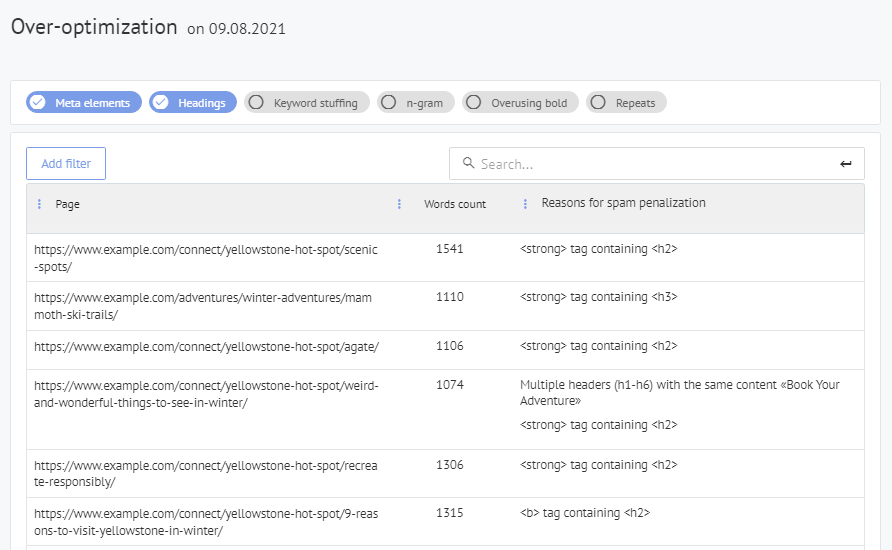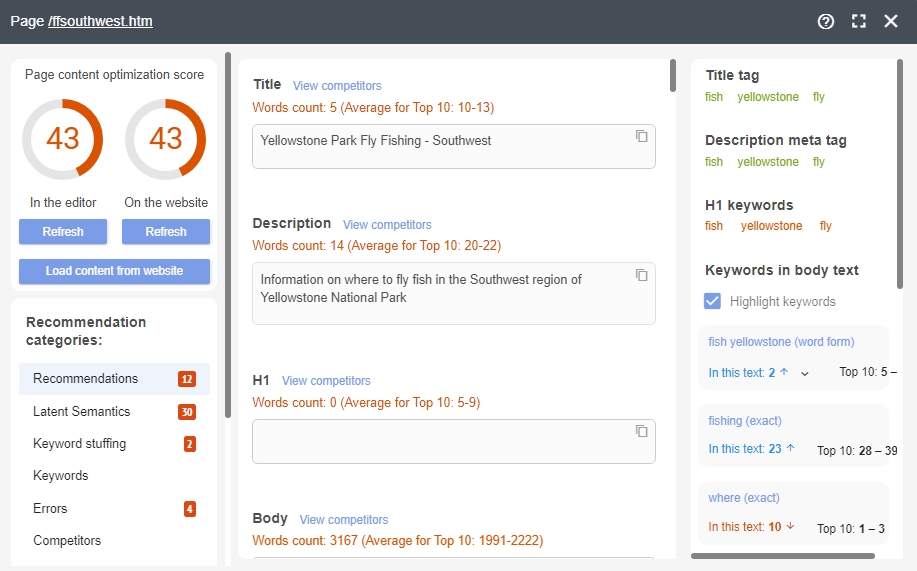
How to Avoid Spamdexing in Meta Tags for SEO
What exactly is 'spam' in meta tags?
This is the type of spam found in meta tags and headers. Also known as 'spamdexing' or 'keyword stuffing'. It is an attempt to improve a site's Google ranking by overusing keywords or key phrases.
The idea was to convince Google that the page must surely be about the subject of those keywords. Making the page appear more useful to the user than it actually potentially was.
Why spamdexing no longer works
Over the past 20 years Google's algorithms have massively improved. They now know all the tricks in the keyword stuffer's book! And most of the other methods used to fool search engines.
For that reason, these tactics no longer work, and are more likely to be harming your site. As the name 'spamdexing' indicates, Google view any type of keyword stuffing as spam. This means your site will likely be hit with a manual penalty, be deindexed or may just never appear in the rankings.
The primary reason for this is of course that: Google wants the best experience for its users, so that they keep coming back!
The key to SEO is paying attention to everything - not just keywords!
20 years ago, keyword stuffing a page, or a meta tag may have worked but as we've just discussed this is no longer the case. There is no simple fix anymore, senior Google staff stress that you have to start with the most basic element: good content!
Good, informative content will naturally include relevant keywords and phrases. The general recommended keyword density is 3% and under. Secondary keywords are also very important, we tend to recommend you use around 4 per piece of content.
Meta tags are a key part of any page’s content, and ensuring your meta tags help describe what your page is about, is very important! Meta tags should appear as natural as possible, and concisely convey the content of the page. As long as you remember this, you are unlikely to have many issues.
Keyword spam summed up
These are the tactics used to keyword spam on a page:
- Hiding keywords in text font size zero.
- Placing an image in front of the spam words.
- Adding the spam keywords at the end of otherwise good content.
However, in this article we want to focus on spam meta tags.
How to fix spam in meta tags
Firstly, you can use our ‘Over optimization’ report in the ‘SEO audit and crawl’ section of our dashboard. This will give you an indication of the pages that Google are likely to view as potential spam.

Once you have established your meta tags are over optimized (e.g. keyword stuffed) there is only one real course of action - remove them and start again!
You can use our handy keyword optimizer to ensure you're using the best keywords for your page in line with the guidelines.

By doing this, your meta tags should help, not hinder, your page.
What meta tags are the most important for keyword usage?
Not all meta tags carry the same SEO impact when it comes to telling Google what your site is about. Here is a breakdown of the different types of meta tags, and their importance:
<title> and description meta tags
The <title> tag is the most important because it announces the name of your page's content.
This is what users will see when they first see your site on the search engine results page. It's important to have your primary keyword here.
The description often appears in search results, and gives the user some idea of the page's content:
<meta name="description" content="whatever you want in here">
It can often be found underneath the title on the SERP (although Google may opt for another snippet from your page).
However, as this is information that the user will potentially see, it is important to keep it enticing and interesting for the user. Click through rates will also positively affect a page's ranking, so the better the meta description, the better the potential page ranking!
Header meta tags: <h1>, <h2>, <h3>
Not only do header tags indicate the content of the page to Google, but they also make the text more readable and digestible for the user.
Include your keywords in these tags where possible, but be careful not to 'stuff' them in. They should look natural in the context of the other words in your header.
<h1> tag: You should always have only one of these and it should include your primary keyword.
<h2> tag: You can use multiple of these, and where possible, include secondary keywords and phrases.
<h3> tag: These are used less frequently, except in long articles that delve deeper into a topic. These would be further subdivisions of the <h2> topic, and therefore must be relevant to it.
Alt attribute (or tag) for images
Google likes to understand what an image depicts. Systems that do not display images like to display some alternative explanatory text – which is where “alt” comes from. It’s used in image attributes such as:
<img src="beach-scene,jpg" alt="A beautiful beach with white sand and green palm trees” . . .>
Naturally, the image should be relevant to your page topic and therefore it should be quite natural to include a keyword here. Alt attributes are good SEO and can also help rank in Google images.
Summary: meta tag stuffing
Spamdexing is usually pretty obvious, especially to search engines. If a piece of content/ meta tags appear to be stuffed or seem unnatural, the chances are Google will notice it too!
Nowadays it is an unnecessary tactic and can be easily avoided by using your keywords naturally. Using tools such as our ‘SEO audit – over optimization report’ will allow you to see where your site is at risk of a penalty. You can then use our content optimizer to find keywords that others in your industry have ranked for in the top 10. Use these naturally in your meta tags, giving you that competitive advantage.
The key takeaway is use keywords to your advantage, not to your detriment!
